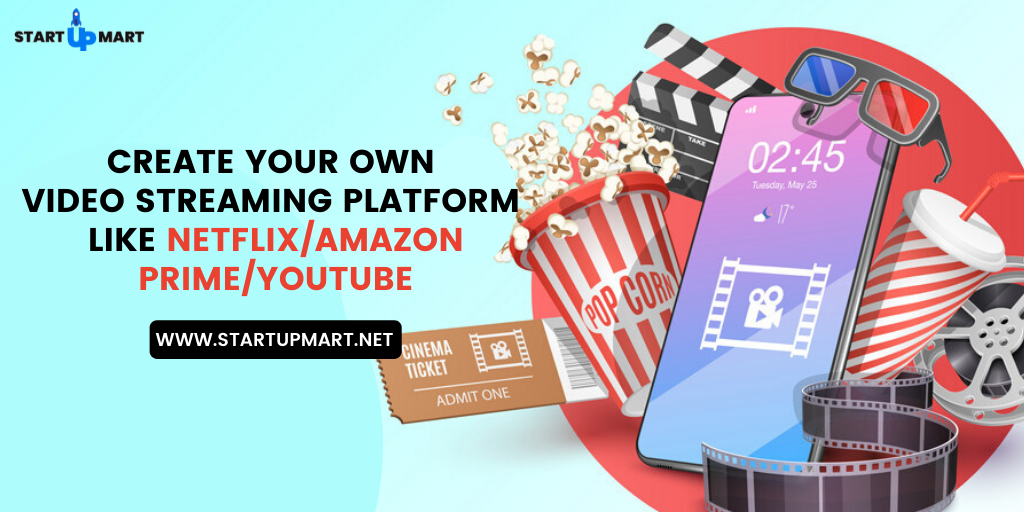Are you dreaming of creating the next big video sharing platform, akin to YouTube? You're not alone! Many aspiring entrepreneurs are eager to jump into the world of video content. With billions of users consuming videos daily, there's a vast opportunity to cater to niche markets or specific interests. In this blog, we’ll explore how to turn your vision into reality, starting from the foundational concepts and moving towards the tech that can support your ideas.
Choosing the Right Technology Stack

When it comes to building a video sharing website, selecting the right technology stack is crucial. This will determine how effectively your site functions, how scalable it is, and how user-friendly it becomes. Here’s a breakdown of key components you'll want to consider:
- Front-End Development: This is what your users will interact with directly. Popular choices include:
- HTML/CSS: The backbone of your site’s structure and design.
- JavaScript: Essential for creating dynamic content. Frameworks like React or Vue.js can enhance user experience with responsive features.
- Back-End Development: This powers the server-side logic. Consider:
- Node.js: Great for handling multiple connections and real-time data.
- Python: Known for its simplicity and readability, especially with frameworks like Django.
- PHP: A solid option with a rich ecosystem, especially if you're familiar with WordPress.
- Database Management: To store user data, video files, and metadata, you need a reliable database:
- MySQL: A popular choice for structured data.
- NoSQL Databases (like MongoDB): Ideal for handling unstructured data, such as user comments and video tags.
- Video Hosting and Streaming: Hosting video files can be resource-intensive. Here are some options:
- Amazon S3: Scalable storage for your videos.
- Vimeo API: For easy video hosting and streaming capabilities.
- Cloudflare Stream: A reliable option for video streaming with global reach.
- Content Delivery Network (CDN): To ensure fast loading times, especially for video:
- Akamai: One of the oldest and most reliable CDNs.
- Cloudflare: Offers free and paid plans with excellent performance.
By carefully considering each of these components, you can assemble a technology stack that not only meets the current demands of your video sharing platform but also allows for future growth. Remember, the goal is to create a seamless experience for your users, from uploading videos to watching them without interruptions.
Also Read This: How Much Is 800k Views on YouTube Worth? Exploring Earnings from Views
3. Designing Your Video Platform's User Interface

When it comes to creating a video platform like YouTube, the user interface (UI) is crucial. It's the first thing users will notice, and a well-designed UI can make or break their experience. So, how do you create an engaging and intuitive interface? Let’s break it down!
1. Focus on User Experience (UX): Your primary goal should be to make navigation seamless. Think about how users interact with your platform:
- Clear Navigation: Use a simple menu structure. Categories like “Trending,” “Subscriptions,” and “My Videos” should be easy to find.
- Search Functionality: Implement a prominent search bar. Users should be able to find content quickly with filters for categories, channels, and upload dates.
2. Aesthetic Appeal: A clean, visually appealing design can enhance user engagement. Consider the following:
- Color Scheme: Use a color palette that reflects your brand. Ensure there’s enough contrast for readability.
- Typography: Choose fonts that are easy to read and consistent throughout the platform.
3. Responsive Design: With users accessing video platforms across various devices, your UI must be adaptive. Make sure your platform looks great on:
- Desktops
- Tablets
- Smartphones
Utilize a flexible grid system to ensure elements adjust based on screen size.
4. User Engagement Features: Incorporate features that promote interaction, such as:
- Comments Section: Let users share their thoughts and engage with content creators.
- Like and Dislike Buttons: These simple features allow viewers to express their opinions on videos easily.
- Video Recommendations: Implement algorithms that suggest videos based on viewing history, keeping users on your platform longer.
In summary, designing your video platform's UI is about creating an enjoyable and engaging experience for users. By focusing on usability, aesthetics, responsiveness, and engagement, you’ll set the stage for a platform that users will love to visit repeatedly.
Also Read This: How to Get 1 Million Subscribers on YouTube: Proven Strategies for Rapid Channel Growth
4. Setting Up Video Hosting and Streaming Services

Once you’ve designed your platform, the next critical step is to set up video hosting and streaming services. This is where the magic happens—where users upload and watch videos. Let's dive into the essentials!
1. Choose a Reliable Hosting Provider: You need a robust hosting service that can handle high traffic and large video files. Some popular options include:
- AWS (Amazon Web Services): Offers scalable solutions and tools like S3 for storage and CloudFront for content delivery.
- Vimeo OTT: Tailored for video hosting, it provides monetization options and great analytics.
- Google Cloud Storage: Another solid choice for storing and serving videos with your own CDN.
2. Video Encoding and Compression: You’ll want to encode your videos to ensure they can be streamed smoothly. Look into:
- Formats: Use formats like MP4 or WebM for compatibility across devices.
- Compression: Tools like HandBrake can help reduce file sizes without compromising quality, ensuring faster load times.
3. Streaming Protocols: Employ the right streaming protocols to deliver videos efficiently:
- HLS (HTTP Live Streaming): Great for adaptive streaming, adjusting video quality based on user bandwidth.
- RTMP (Real-Time Messaging Protocol): Useful for live streaming, allowing for real-time interaction.
4. Content Delivery Network (CDN): To enhance video loading times, consider using a CDN. This will distribute your content across various servers globally, ensuring users have quick access to videos, regardless of their location.
In summary, setting up video hosting and streaming services requires careful planning and execution. By selecting reliable hosting, optimizing video formats, employing effective streaming protocols, and utilizing a CDN, you’ll create a smooth viewing experience your users will appreciate!
Also Read This: How to Use YouTube on Apple TV: A Beginner’s Guide
5. Implementing User Registration and Profiles
So, you’ve decided to create your own video platform—exciting, right? One of the first major steps is implementing user registration and profiles. This is crucial for building a community and keeping your users engaged. Let’s dive into how you can effectively set this up.
User Registration: Start by creating an intuitive registration process. Users should be able to sign up using their email, or even better, through social media links like Facebook or Google. This not only speeds up the process but also increases the likelihood of users completing registration. Consider the following fields:
- Email Address
- Username
- Password
- Profile Picture
Once users fill out this information, send them a confirmation email. This step helps verify that the email address is valid, which can reduce spam accounts.
User Profiles: After registration, users should have access to their profiles. This is where they can showcase their personality and preferences. Here are some features to include:
- Profile Picture: Allow users to upload a picture to personalize their page.
- Bio Section: A short bio helps users express themselves. You can set a character limit to keep it concise.
- Video Library: Show users their uploaded videos and saved favorites. This can encourage them to engage more.
- Friends/Followers List: Enabling users to connect with others can help build a sense of community.
Make sure the profile interface is user-friendly. Nobody wants to navigate through a maze just to update their picture or check their videos!
Additionally, think about privacy settings. Users should have control over who can see their content and interact with them. This can be a significant selling point, especially for users concerned about their online footprint.
In summary, a seamless registration and profile setup is pivotal. By focusing on user experience and personalization, you’ll encourage more people to join and stay active on your platform.
Also Read This: How to Share a YouTube Video on Instagram: The Full Process
6. Enhancing Your Site with Search and Recommendation Features
Now that your users are registered and have profiles, it’s time to enhance their experience with robust search and recommendation features. These tools will help users discover content that truly interests them, keeping them engaged longer.
Search Functionality: Implementing a powerful search bar is one of the first steps. Users should be able to search for videos by:
- Title
- Description
- Tags or Categories
- Usernames
Consider using autocomplete suggestions to guide users as they type. This can speed up their search and improve overall satisfaction. Integrating filters can also help users narrow down results based on categories or upload dates.
Recommendation System: A personalized recommendation engine can significantly enhance user experience. By analyzing user behavior, such as watch history and likes, you can suggest videos that align with their interests. Here’s how to create an effective recommendation system:
- Collaborative Filtering: This method suggests videos based on what similar users have enjoyed. If someone with a similar taste liked a certain video, recommend it to others.
- Content-Based Filtering: This approach focuses on the content itself. If a user watches a lot of cooking videos, suggest more cooking-related content.
- Trending Content: Highlight popular videos on your platform. It can attract users who want to stay updated on what’s hot.
Make sure to frequently update your recommendation algorithms. As trends change, so do user preferences, and your system should adapt accordingly.
In conclusion, enhancing your video platform with effective search and recommendation features is key to user retention. By making content discovery easy and personalized, you’ll create a more enjoyable and engaging environment for your users.
Also Read This: Don’t Recommend Channel on YouTube: How to Manage Your YouTube Suggestions and Recommendations
7. Monetization Strategies for Your Video Platform
When it comes to creating a video platform similar to YouTube, one of the most crucial aspects is figuring out how to make it financially sustainable. Here are several monetization strategies you can consider:
- Ad Revenue: This is the most common method. You can partner with advertisers to display ads before, during, or after your videos. Platforms like YouTube use this extensively. You might want to implement a model where you share ad revenue with your content creators, encouraging them to produce more videos.
- Subscription Model: Offer a premium subscription service where users pay a monthly fee for ad-free experiences or exclusive content. Think of platforms like Patreon, where content creators can offer tiered subscriptions for extra perks.
- Sponsorships: Collaborate with brands that align with your user base. Sponsored content can be a significant revenue stream, especially if you have niche communities that attract specific advertisers.
- Merchandising: If your platform gains a dedicated following, consider selling branded merchandise. This could include T-shirts, hats, or even digital products related to popular content.
- Video Rentals or Purchases: Another option is to allow users to rent or buy premium content. This works well for documentaries, workshops, or exclusive series that users can’t find elsewhere.
- Affiliate Marketing: By promoting products related to your video content, you can earn a commission for every sale made through your platform. For example, if a creator discusses a specific gadget, linking to that product could generate additional income.
- Crowdfunding: Leverage platforms like Kickstarter or Indiegogo for special projects. If you have a strong community, many users may be willing to fund specific video series or initiatives.
In conclusion, diversifying your monetization strategies is key. By combining several of these methods, you can create a robust revenue stream that supports both your platform and the creators who contribute to it.
Also Read This: Why Indian People Often Excel in YouTube Reviews
8. Marketing Your Video Platform to Attract Users
Now that you have your video platform up and running, the next step is marketing it effectively. Attracting users in a crowded space like video content can be challenging, but with the right strategies, you can stand out. Here are some effective marketing techniques:
- Social Media Engagement: Utilize platforms like Instagram, Twitter, and TikTok to promote your content. Share clips from videos, behind-the-scenes looks, and engage with your audience to create buzz.
- Influencer Partnerships: Collaborate with influencers who resonate with your target audience. They can create content for your platform, bringing their followers along and exposing them to your service.
- Content Marketing: Create a blog or a newsletter where you share trends, tips, and insights about video creation and consumption. This positions you as an authority and can draw users interested in learning.
- Search Engine Optimization (SEO): Optimize your platform’s content for search engines. Use relevant keywords in your video descriptions, titles, and tags to help potential users discover your platform through organic search.
- Referral Programs: Encourage your current users to invite friends by offering them incentives, such as free subscriptions or exclusive content, for every new user they bring in.
- Community Building: Foster a sense of community within your platform. Host events, create forums, or launch contests that encourage user interaction and bring people back for more.
- Paid Advertising: Invest in targeted online advertising through Google Ads or social media platforms. These ads can specifically target demographics that align with your ideal user base.
Marketing is an ongoing effort, so continuously assess your strategies and adjust based on what’s working best. By combining creativity with data-driven decisions, you can effectively attract users to your new video platform.
Also Read This: How Much Do ASMR YouTubers Earn? Exploring the Revenue Potential
9. Maintaining and Scaling Your Video Website
Maintaining and scaling your video website is crucial to ensuring its longevity and success. Just like a thriving garden, your platform needs regular attention, updates, and occasional expansion to keep it flourishing. So, how can you do this effectively? Let’s dive in!
Regular Updates and Maintenance
First off, staying on top of software updates is vital. Whether you’re using a custom-built solution or a CMS like WordPress with plugins, regularly updating your codebase helps you:
- Fix security vulnerabilities
- Improve performance
- Enhance user experience with new features
Consider setting a schedule—perhaps monthly—to check for updates, and ensure your website runs smoothly. Additionally, conduct regular backups to avoid data loss; something like UpdraftPlus for WordPress can automate this process.
Performance Optimization
No one enjoys waiting for videos to load, right? Speed is everything in the digital world. To enhance your site's performance:
- Use a Content Delivery Network (CDN) to deliver content faster to users, regardless of their location.
- Optimize video files for web without sacrificing quality. Tools like HandBrake can help.
- Implement lazy loading for videos so that they load only when needed, reducing initial load times.
Scaling Your Infrastructure
As your platform grows, so will your audience. Scaling your infrastructure is essential to handle increased traffic while ensuring a smooth user experience. Here are some strategies:
- Cloud Hosting: Consider moving to cloud-based services like AWS or Google Cloud. They offer flexibility and can scale resources automatically based on demand.
- Load Balancing: Distribute user traffic across multiple servers to prevent any single server from becoming overwhelmed.
- Database Optimization: Regularly clean and optimize your database to enhance performance, especially as user-generated content increases.
Additionally, don't forget about customer feedback. Encourage users to share their thoughts and experiences using surveys or feedback forms. This feedback loop can help you identify areas for improvement and new features your audience craves.
10. Conclusion: The Future of Your Video Platform
As we wrap this up, let’s reflect on the journey of creating your own video platform. There’s a world of opportunity ahead, and the future looks bright! But how do you ensure sustained success?
Adapting to Trends
The digital landscape is ever-evolving, and staying updated with industry trends is vital. Platforms like TikTok and Twitch have reshaped the video-sharing world, emphasizing shorter content and live streams. Pay attention to these shifts and consider how you can incorporate similar features into your platform.
Building Community
The future isn’t just about videos; it’s about creating a community around your content. Engage with users through comments, forums, and social media to foster a sense of belonging. Host events, challenges, or contests to keep your audience actively involved and excited about your platform.
Monetization Strategies
As your platform grows, exploring monetization options becomes essential. Think beyond traditional ads; consider:
- Subscription Models: Offer premium content or ad-free experiences for a monthly fee.
- Sponsorships: Collaborate with brands relevant to your user base for sponsored content.
- Merchandising: Create and sell branded merchandise to your most loyal viewers.
In conclusion, creating your video platform is just the beginning. With dedication, adaptability, and a clear vision for the future, you can build a dynamic space that resonates with users and stands the test of time. So go ahead, embrace the journey, and let your creativity shine!
 admin
admin








